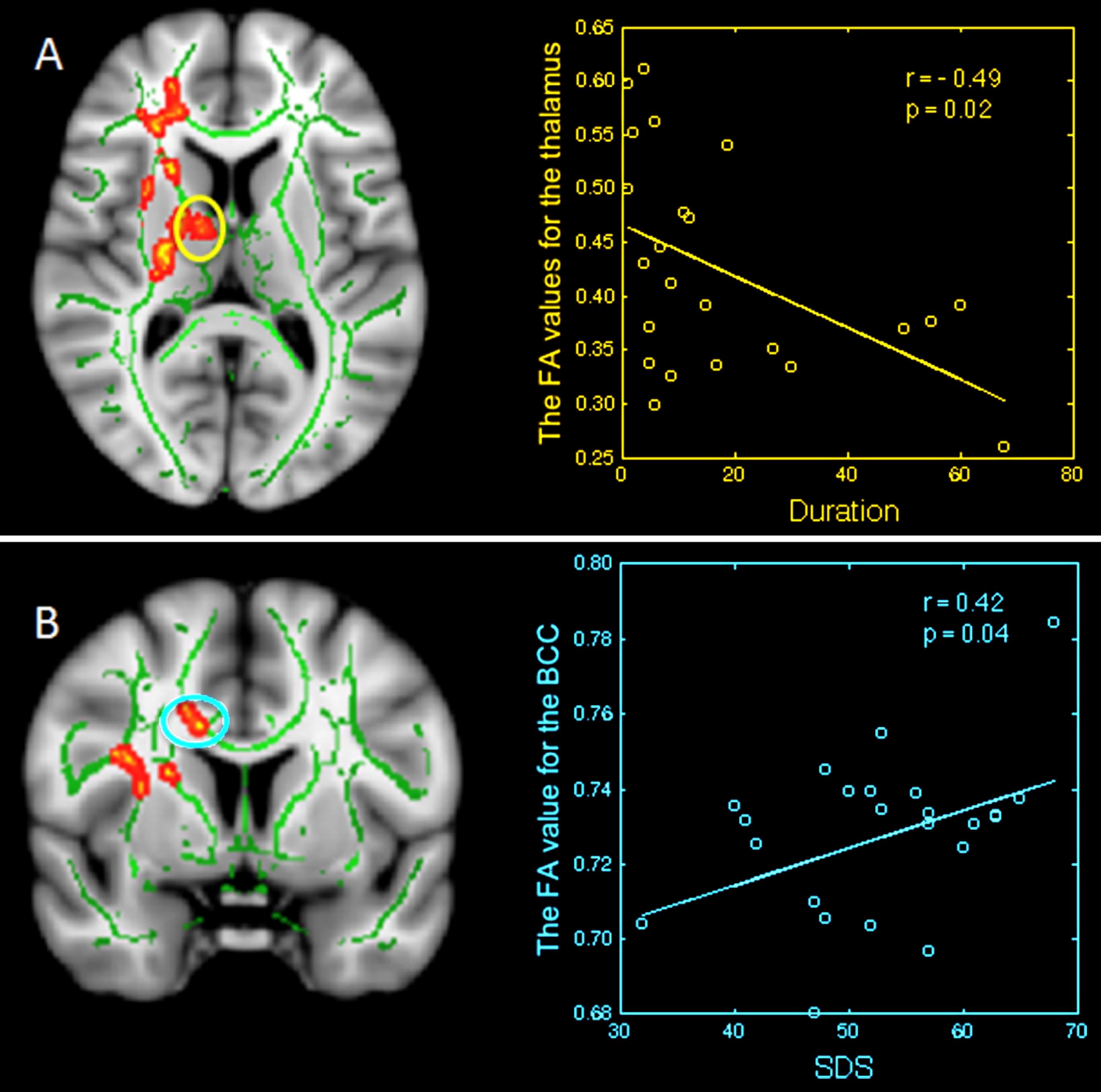DTI Study Finds Damaged Brain Networks Possible Cause of Insomnia
By MedImaging International staff writers
Posted on 06 Apr 2016
Researchers discover link between insomnia and altered integrity of the white matter tract in regions of the brain that regulate alertness, consciousness, and sleep.Posted on 06 Apr 2016
The study included 23 patients suffering from insomnia, and 30 healthy control subjects who were examined using a special Magnetic Resonance Imaging (MRI) sequencing technique called Diffusion Tensor Imaging (DTI). The patients and control subjects were also given questionnaires to evaluate their mental status, and sleep patterns. The questionnaires included the Insomnia Severity Index, the Pittsburgh Sleep Quality Index, the Self-Rating Depression Scale, and the Self-Rating Anxiety Scale.

Image: Images on the left display region-of-interest maps of the relationship between mean FA and disease duration, and clinical features in primary insomnia, while the corresponding graphs are displayed on the right (Photo courtesy of RSNA).
The researchers published their findings in the April, 2016, online issue of the journal Radiology. The researchers used MRI-DTI to analyze the white matter tracts in the insomnia patients and studied the relationship between abnormal white matter integrity and the duration and nature of the sleep disorder.
The results of the study showed the insomnia patients had significantly reduced white matter integrity in several regions of the right-brain, including the thalamus, compared to the healthy controls. The duration of patients' insomnia, and the score they gave on the self-rated depression scale, was associated with abnormalities in the thalamus, and body corpus callosum. The cause of white matter integrity abnormalities in the insomnia patients could have been caused by loss of the protective myelin coating around nerve fibers.
Shumei Li, MS, Researcher at the Department of Medical Imaging, Guangdong No. 2 Provincial People's Hospital (Guangzhou, China), said, "Insomnia is a remarkably prevalent disorder. However, its causes and consequences remain elusive. White matter tracts are bundles of axons—or long fibers of nerve cells—that connect one part of the brain to another. If white matter tracts are impaired, communication between brain regions is disrupted. We used a new method called Tract-Based Spatial Statistics that is highly sensitive to the microstructure of the white matter tract and provides multiple diffusion measures. These impaired white matter tracts are mainly involved in the regulation of sleep and wakefulness, cognitive function and sensorimotor function The involvement of the thalamus in the pathology of insomnia is particularly critical, since the thalamus houses important constituents of the body's biological clock.
Related Links:
Guangdong No. 2 Provincial People's Hospital














